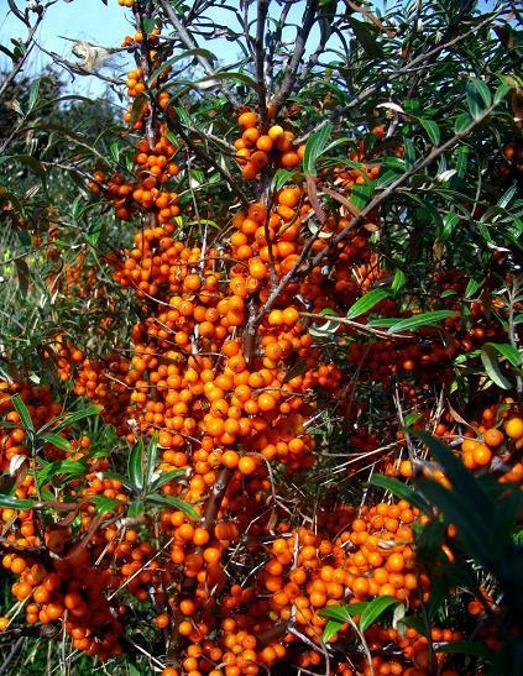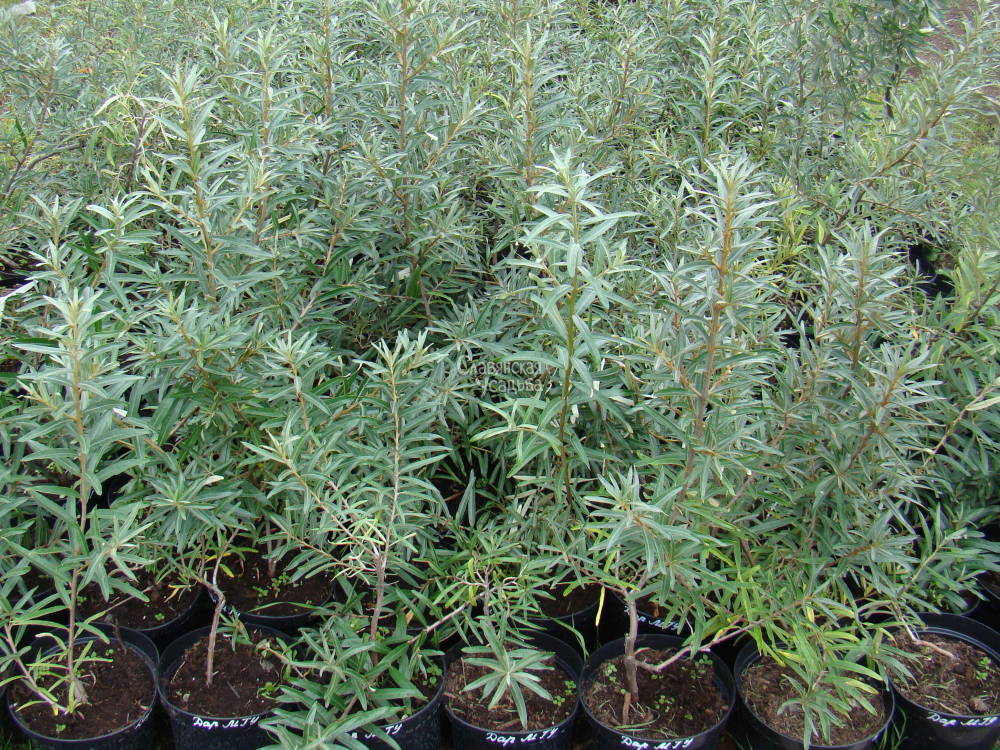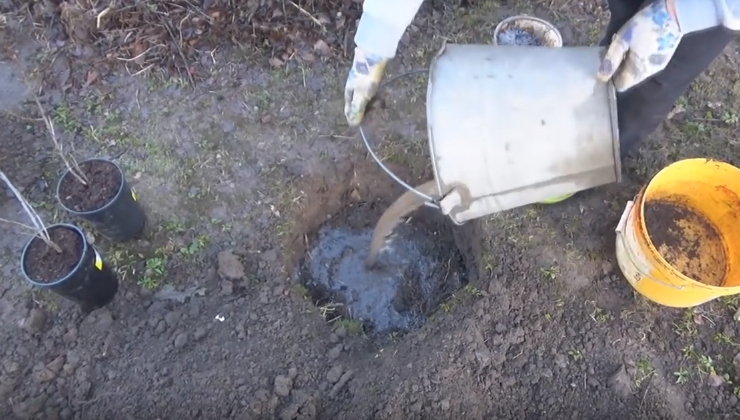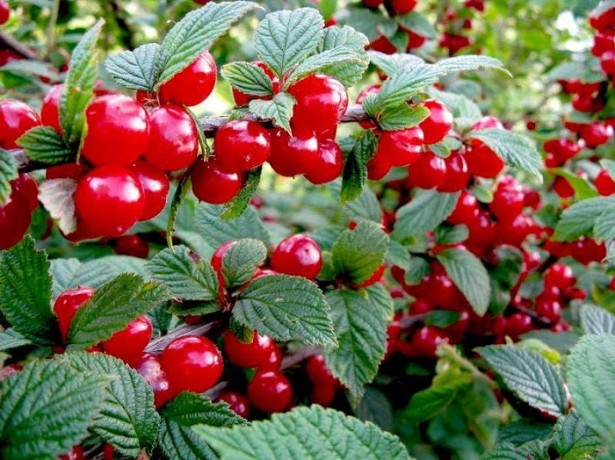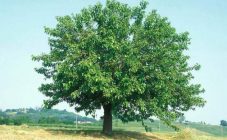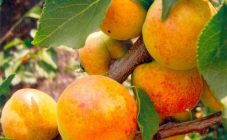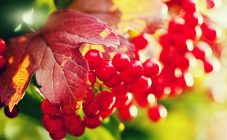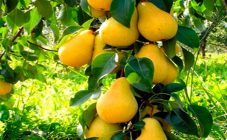Content:
Experts attribute sea buckthorn to the genus of plants of the Lohovye family. The main tree growth zone is coastal areas near rivers and lakes. Also, the plant can be found high in the mountains at an altitude of more than 2000 m above sea level. Sea buckthorn berries are often used in folk medicine. They treat both people and animals. Horses that fed on the foliage of the bush were distinguished by their silky coat and excellent health.
general information
Sea buckthorn can grow as a shrub or small tree. The height of the plant can be either 15-20 cm or more than 6 m.The roots are located superficially at a depth of 35-40 cm, however, they grow in width to a distance of 70-100 cm.
The foliage of the sea buckthorn is long and narrow. The plates in the upper part are painted in green tones with specks, and in the lower part, silver-white or reddish-golden shades prevail. Unisexual inflorescences are inconspicuous. They begin to open at the same time as the foliage blooms. The plant blooms in the last days of April.
The representative of the Lokhovy family belongs to dioecious plants. The male silvery-brown flower forms a short inflorescence at the base of the young shoot, while the yellow female flowers appear one at a time in the bosom of the cover scales. The fruits of the sea buckthorn are spherical drupes, which consist of a nut and an orange receptacle. The fruits ripen after 3 months.
The berries are used to make healing oils, preserves and juice. To get a harvest, you must plant a male cultivar near the female plant, which will become a pollinator. One male bush can pollinate 4-6 female ones. The tree will begin to bear fruit 4-5 years after planting.
In the wild, sea buckthorn bushes can be found in Transbaikalia, Sayan, Tuva, Altai, in the southern regions of Kazakhstan and Central Asia. How to plant and cultivate a plant in open ground where sea buckthorn grows, planting and caring for a shrub - all this will be discussed in this article.
Sea buckthorn varieties
The most popular varieties of sea buckthorn are:
- The Moscow beauty is a low-growing variety of shrub, the height of which does not exceed 2.5 m. The variety is resistant to various ailments and boasts an average yield level. You can collect the first fruits in the last days of August. The berries are distinguished by their large size and the most delicate pulp with a sweet and sour aftertaste. The variety belongs to the table type, and the berries are colored orange. The Moscow beauty is successfully grown in the middle lane. The harvest is rich.
- Chuisky species is a medium-sized tree, reaching a height of more than 4 m. The tree has small rare thorns. The variety is universal, the fruits are very tasty and sweet. You can harvest the first crop in early September. The berries will be not only tasty, but also large.
- Elizabeth - large fruits captivate with sweetness and excellent dessert aroma. The variety is suitable for growing in Irkutsk, Moscow, Moscow region and St. Petersburg.
- Red torch. Sea buckthorn is distinguished by its large fruits, colored in a red tint. The plant is resistant to most diseases. Sour fruits grow to medium size. The tree belongs to medium-sized crops.The variety can be successfully grown in the middle lane, in the Urals, in Siberia. Berry picking begins in mid-September.
Which variety is better for a summer resident depends on the region and personal preferences. The individual characteristics of varieties are sometimes very different.
Sea buckthorn: care and cultivation
How to plant sea buckthorn correctly, what to do so that it takes root? Sea buckthorn is considered a long-liver. The tree can live up to 20-30 years. The root system tubers consume nitrogen from the air. A dicotyledonous plant is wind-pollinated. Only on the female can a crop appear, on the male bush the berries are not formed. However, it is the male that takes part in the pollination of the female bush. You can distinguish male bushes from female ones by the buds, which on the male plant look larger and consist of 5-7 scales.
How to plant sea buckthorn in spring and autumn? Below are recommendations from experts.
Step-by-step process of planting sea buckthorn:
- For the seedling, a site with neutral soil of medium acidity is selected - the main rule that will help the tree to take root.
- It is advisable to wait until April or the end of September for planting a young tree.
- Having dug a hole 45-50 cm deep (the correct parameters advised by experts), you should mix the soil with a part of humus or peat. Then it is very important to enrich the earth with mineral admixtures, potassium sulfate and superphosphate.
- Having placed the seedling in the ground, it is necessary to water it with a solution made on the basis of dolomite flour. Only then can the root system be sprinkled with soil.
- Trees are planted at a distance of 2-2.5 m in a row.
When planting, make sure that the root collar goes 5-6 cm deep into the soil.
Sea buckthorn care
How to grow sea buckthorn so that it pleases with a good harvest and is healthy. It is necessary to study the characteristics of the variety and follow the recommendations of experienced summer residents.
When growing a tree, it is very important to provide it with proper care. Experts recommend:
- Timely engage in the elimination of dried shoots and root growth.
- Systematically loosen and feed the near-stem soil. In addition, it is necessary to weed and water the crop.
- For watering, it is advisable to use the rain method (especially on hot days).
- When growing a seedling, keep under control the concentration of water in the soil and in the air.
- In one season, it is necessary to fertilize 4 times using foliar fertilizers. The very first is required at the time of foliage blooming, the second at the beginning of the flowering of the culture (potassium humate solution). Subsequent dressings are carried out 21 and 40 days after the second. For the last dressings, solutions such as Effekton and Sodium humate are suitable. What else to feed the tree will be advised in any specialized store.
How to harvest sea buckthorn correctly? Often this question is found on the forums of summer residents. This will require special devices vaguely resembling loops. They are thrown on the branches of a bush, and then with a sharp movement of the hand they pick the berries from the tree.
Sea buckthorn pruning
Pruning sea buckthorn is an important process that cannot be ignored. When caring for seedlings, pruning of the tops should be carried out in a timely manner in order to accelerate the intensity of crown development. Pruning is carried out every year until the buds begin to bloom on the shrub. In addition to damaged and diseased branches, damaged root growths are also removed.
7 years after planting the seedling, experts recommend anti-aging pruning. During this period, fruiting will decrease significantly.In order to prevent it from a shrub plant, it is necessary to cut off the branches of three years ago. Pruning can be done when autumn comes.
Reproduction and selection of a seedling
Reproduction of sea buckthorn is possible by seed and vegetative method. The seeds can be purchased at any specialty store.
It is quite difficult to distinguish an off-grade seedling from a cultivated shoot, which was propagated by cuttings. If the roots look much thinner than the top of the young tree, you can be sure that this is an extension of the root system. It is best to purchase a small seedling that has been grown from a cuttings.
Shrub propagation by green cuttings
Cutting sea buckthorn is similar to cutting other shrubs. This system is recognized as the most effective of the breeding methods. At the beginning of summer, a 15 cm long stalk should be cut off and several of the bottom sheets removed. The slice is treated with growth substances. The stalk is placed in the nutrient soil of the greenhouse and covered with foil. The combination of peat and river sand with fertile soil will make it possible to fertilize the cutting well and create favorable conditions for active growth. The humidity in the greenhouse must be kept at 90%.
Further actions are reduced to:
- Systematic watering and spraying of the cuttings.
- Conducting fertilizing with mineral fertilizers after the appearance of roots.
- Hardening by airing.
- Removing the film from the cutting and fertilizing with phosphorus-potassium lure after it is fully strengthened.
- In April, you can transplant a seedling to a permanent place.
Propagation using woody cuttings
At the end of November, cuttings that are more than 5 mm thick are cut and buried in a snowdrift so that the plant continues to sleep. With the onset of spring, you can cut off workpieces, the length of which will be 15 cm and place them in water for several days. Only then is the seedling lowered into a solution that increases the growth rate of the plant.
As soon as the first roots appear, the seedling should be planted in fertile soil to a depth of 12-16 cm. It is best to mix the soil with peat, humus and river sand. After that, you can cover the tree with foil material. 2-4 buds should remain above the ground. A young seedling needs systematic watering.
Growing sea buckthorn in the country is a rather laborious process, in which it is important to collect preliminary information from specialists and strictly follow it. Any disease can affect a plant. From year to year, trees need to be treated with fungicides. It is equally important to make timely fertilizers, top dressing, in order to nourish the tree with useful substances and accelerate its growth.
Systematic watering will allow you to get a bountiful harvest. The berries will be juicy and large. However, it is also not worth pouring plants daily, the sea buckthorn will become watery, and the roots will begin to rot. Adhering to the basic rules and recommendations of specialists regarding the care of sea buckthorn, you can grow a healthy tree that will delight you with a good harvest.

